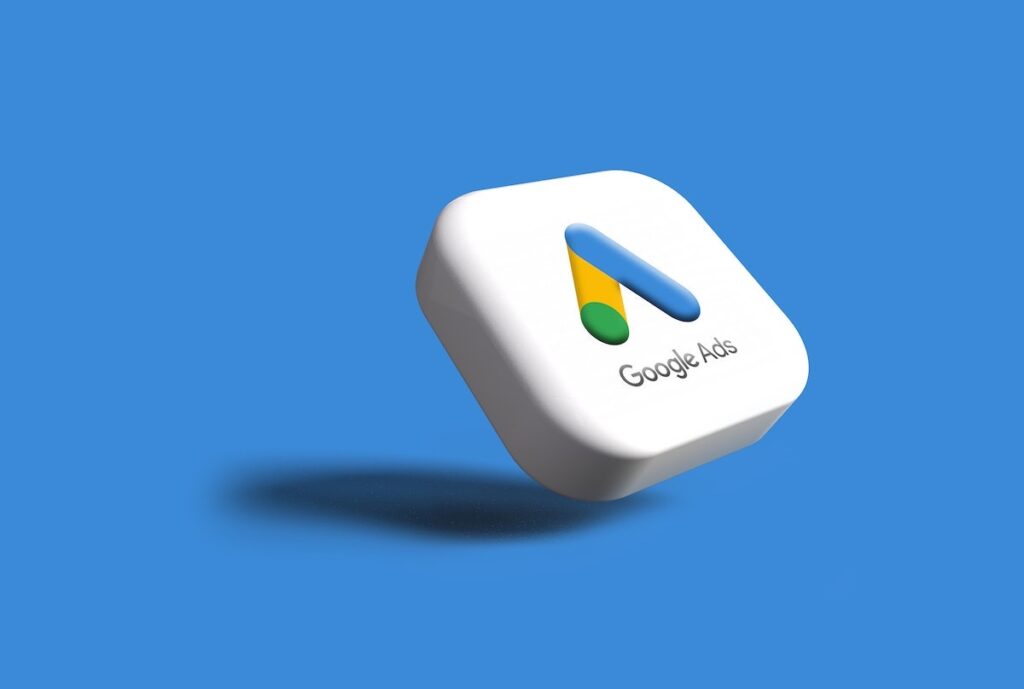Online advertising refers to the use of the internet to promote goods, services, or ideas through various forms of digital media such as websites, social media platforms, email, mobile apps, and others. The goal of online advertising is to reach a targeted audience and deliver a message, usually in the form of an advertisement, that is intended to drive engagement, conversions, and ultimately generate revenue.
What is the purpose of online advertising
The purpose of online advertising is to reach a large audience and promote a product, service, or brand through various digital channels, with the goal of driving engagement and conversions, such as website visits, sales, sign-ups, or downloads. Online advertising enables companies to target specific demographics, behaviours, and interests, allowing for more personalised and effective marketing campaigns. Ultimately, the purpose of online advertising is to increase brand awareness and drive revenue growth.
Is online advertising suitable for a small business
Yes, online advertising can be suitable for small businesses. In fact, online advertising can be especially beneficial for small businesses because it offers a cost-effective way to reach a large and targeted audience. With the right strategy and tools, small businesses can compete with larger businesses by reaching their target audience and driving brand awareness, traffic, leads, and sales.
Here are a few reasons why online advertising can be a good fit for small businesses:
- Cost-effective: Online advertising allows small businesses to reach a large audience at a relatively low cost compared to traditional advertising methods.
- Targeted audience: Online advertising can be highly targeted, allowing small businesses to reach their ideal customers based on factors such as location, age, gender, interests, and behaviours.
- Measurable results: Online advertising provides measurable results, allowing small businesses to track the performance of their campaigns and understand their return on investment (ROI).
- Flexibility: Online advertising offers a great deal of flexibility, allowing small businesses to adjust their campaigns in real-time and make data-driven decisions based on performance.
What types of online advertising are there
There are several types of online advertising, including:
- Search Engine Advertising (SEA) – Paid advertising that appears at the top or bottom of search engine results pages (SERPs)
- Display Advertising – Includes banner ads, rich media ads, and video ads that appear on websites, social media platforms, and mobile apps.
- Social Media Advertising – Paid advertising on social media platforms such as Facebook, Instagram, Twitter, LinkedIn, and others.
- Video Advertising – Advertisements in the form of videos that appear on platforms such as YouTube, Vimeo, and other video hosting sites.
- Email Marketing – Sending promotional messages and advertisements to a list of opted-in email subscribers.
- Influencer Marketing – Partnering with social media influencers to promote a product or brand through sponsored content.
- Affiliate Marketing – A performance-based marketing strategy where a brand pays affiliates for driving traffic or sales to their website.
- Native Advertising – Paid advertising that is integrated into the content of a website, appearing as a natural part of the user experience.
These are some of the main types of online advertising. The type of advertising chosen will depend on a variety of factors, such as the target audience, marketing goals, budget, and the type of product or service being marketed.
What is PPC advertising
PPC (Pay-Per-Click) advertising is a type of online advertising where advertisers pay each time a user clicks on one of their ads. This type of advertising is typically used in search engine advertising, where ads appear at the top or bottom of search engine results pages (SERPs), or in display advertising, where ads appear on websites, social media platforms, and mobile apps.

In PPC advertising, advertisers create ads and bid on specific keywords that they want their ads to appear for in search results. When a user performs a search that matches the keywords, the advertiser’s ad may appear at the top or bottom of the search engine results page. If a user clicks on the ad, the advertiser pays the search engine a fee, hence the name “Pay-Per-Click”.
PPC advertising allows advertisers to reach a highly targeted audience and only pay for actual clicks on their ads, making it an effective and cost-efficient way to drive traffic and generate leads and sales.
What are display ads
Display ads are a type of online advertising that appear on websites, social media platforms, and mobile apps. They can take various forms, including banner ads, rich media ads, and video ads.
Banner ads are graphical ads that are typically placed on websites and appear in a variety of sizes and shapes. Rich media ads are more interactive and can include features such as animation, sound, and video. Video ads are short video advertisements that appear on websites and platforms such as YouTube.
Display ads are typically sold on a cost-per-impression (CPM) basis, where advertisers pay for each time their ad is displayed to a user, regardless of whether the user clicks on the ad or not. Display advertising allows advertisers to reach a large audience and build brand awareness through visual advertising. When combined with targeting options, such as demographic, geographic, and behavioural targeting, display advertising can be a highly effective way to reach a specific target audience and drive conversions.
How is social media advertising different from Search engine advertising
Social media advertising and search engine advertising (SEA) are both forms of online advertising, but they have some key differences.
Search engine advertising (SEA) involves placing ads on search engine results pages (SERPs) when users perform a search using specific keywords. The ads appear at the top or bottom of the search results, and advertisers pay each time a user clicks on their ad (pay-per-click). SEA is highly targeted and allows advertisers to reach users who are actively searching for products, services, or information related to their business.

Social media advertising, on the other hand, involves placing ads on social media platforms such as Facebook, Instagram, Twitter, and LinkedIn. These ads can take various forms, such as sponsored posts, sponsored stories, and display ads. Social media advertising allows advertisers to reach users based on their social media behaviour and interests, as well as demographic and geographic information. Social media advertising can be used to build brand awareness, drive traffic, and generate leads and sales.
In summary, SEA is highly targeted and best suited for businesses looking to reach users who are actively searching for products or services, while social media advertising is more focused on building brand awareness and reaching users based on their social media behaviour and interests.
How does social media advertising work
Social media advertising works by placing ads on social media platforms such as Facebook, Instagram, Twitter, LinkedIn, and others. Advertisers can create and target ads to specific audiences based on a variety of factors, including demographics, interests, behaviours, and location.
The process typically involves the following steps:
- Define the target audience: Advertisers can define their target audience based on factors such as age, gender, location, interests, and behaviours.
- Create the ad: Advertisers create the ad, which can take various forms such as sponsored posts, sponsored stories, display ads, and more.
- Set the budget and bid: Advertisers set a budget for the campaign and place a bid for each ad impression or click.
- Launch the campaign: The ad campaign is launched and the ads are displayed to the target audience.
- Track and optimise performance: Advertisers can track the performance of their ads, including impressions, clicks, and conversions, and optimise the campaign for better results.
Social media advertising allows advertisers to reach a large and highly engaged audience and drive a variety of objectives, such as building brand awareness, driving traffic, generating leads and sales, and more. The success of a social media advertising campaign depends on several factors, including the target audience, ad quality, bid amount, and overall marketing strategy.
How does video advertising work
Video advertising works by displaying short video advertisements on websites and platforms such as YouTube, Vimeo, Facebook, and others. Advertisers create and upload a video advertisement, and the ad is displayed to users as they watch videos on the platform. Video advertising can take various forms, such as pre-roll ads (ads that appear before a video), mid-roll ads (ads that appear during a video), and post-roll ads (ads that appear after a video).
The process typically involves the following steps:
- Define the target audience: Advertisers can define their target audience based on factors such as age, gender, location, interests, and behaviours.
- Create the video ad: Advertisers create the video ad, which should be engaging, informative, and relevant to the target audience.
- Set the budget and bid: Advertisers set a budget for the campaign and place a bid for each ad impression or click.
- Launch the campaign: The ad campaign is launched and the video ad is displayed to the target audience.
- Track and optimise performance: Advertisers can track the performance of their video ads, including views, clicks, and conversions, and optimise the campaign for better results.
Video advertising allows advertisers to reach a large and engaged audience and build brand awareness, drive traffic, and generate leads and sales. The success of a video advertising campaign depends on several factors, including the quality of the video ad, the target audience, the bid amount, and the overall marketing strategy.
What is influencer marketing
Influencer marketing is a form of marketing that involves partnering with individuals who have a significant following on social media, such as on platforms like Instagram, TikTok, YouTube, and others, to promote a product, service, or brand. The influencer promotes the brand to their followers, who in turn may become customers or followers of the brand themselves.
Influencer marketing can take various forms, such as sponsored posts, product reviews, and brand mentions. The influencer may receive compensation, such as money, free products, or access to exclusive events or experiences, in exchange for promoting the brand.

Influencer marketing is effective because it leverages the influence and trust that the influencer has built with their followers. By partnering with the right influencer, brands can reach a highly engaged and relevant audience and drive brand awareness, traffic, leads, and sales. However, it’s important for brands to choose influencers who are a good fit with their target audience and brand values, and to clearly disclose any sponsored content to avoid misleading their audience.
How can I measure my display advertising
Measuring the success of display advertising is important to understand the return on investment (ROI) and optimise future campaigns. The following metrics can be used to measure display advertising:
- Impressions: The number of times the ad was displayed to users.
- Click-Through Rate (CTR): The percentage of users who clicked on the ad after seeing it. CTR is calculated as the number of clicks divided by the number of impressions.
- Conversion Rate: The percentage of users who completed a desired action, such as making a purchase, after clicking on the ad.
- Cost per Click (CPC): The cost of each click on the ad, calculated as the total cost of the campaign divided by the number of clicks.
- Cost per Action (CPA): The cost of each completed action, such as a purchase, after clicking on the ad, calculated as the total cost of the campaign divided by the number of actions.
- Bounce Rate: The percentage of users who left the website after visiting just one page, indicating that they did not find what they were looking for.
- Time on Site: The average amount of time that users spent on the website after clicking on the ad.

These metrics can be tracked using tools such as Google Analytics, which can provide detailed data on the performance of display advertising campaigns. By monitoring these metrics, advertisers can identify what is working well and what needs to be improved, and make data-driven decisions to optimise future campaigns for better results.
Conclusion
Overall, online advertising can be a valuable tool for small businesses looking to reach a large and targeted audience, generate leads, and grow their business. However, it’s important to have a well-thought-out strategy, choose the right platforms and advertising formats, and track and optimise the performance of campaigns for best results.


